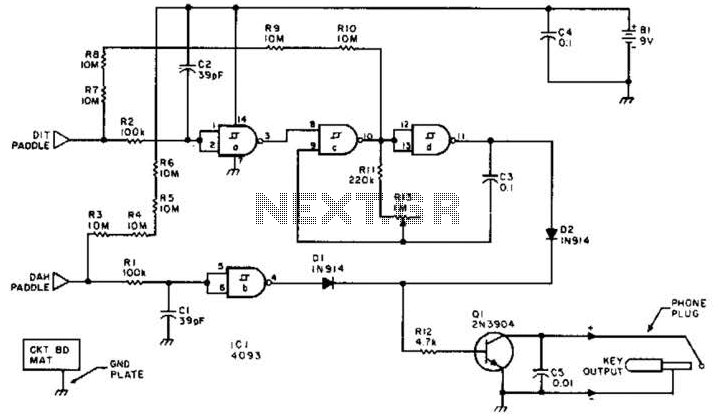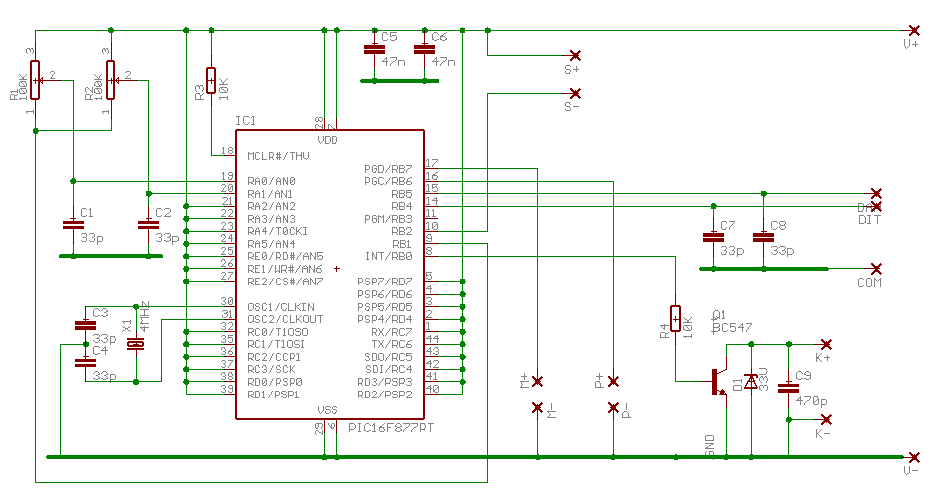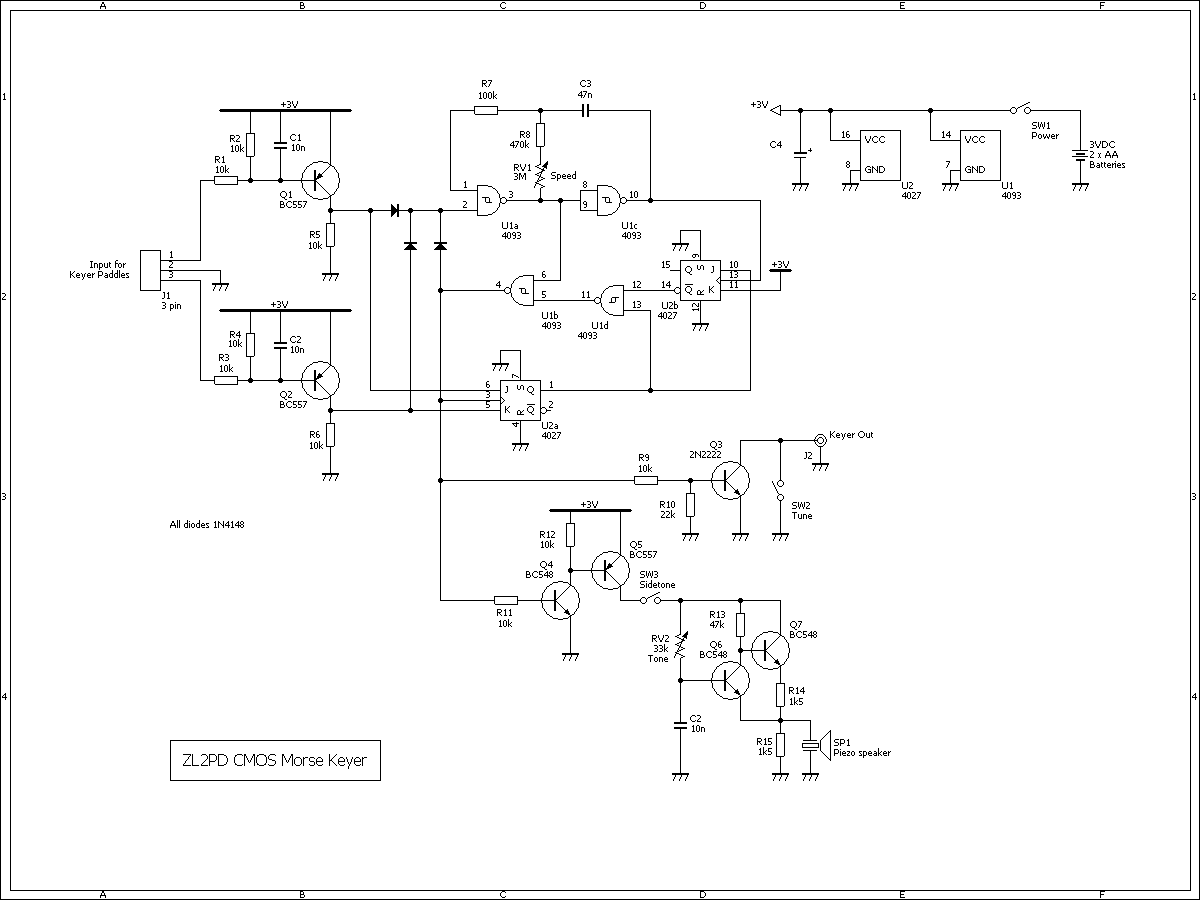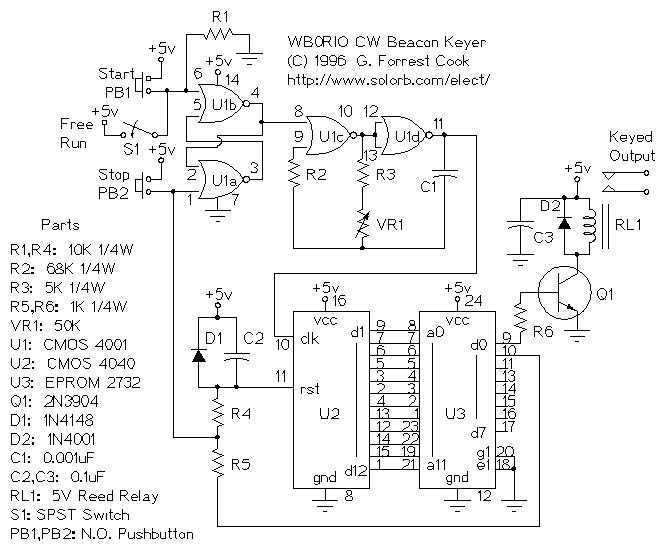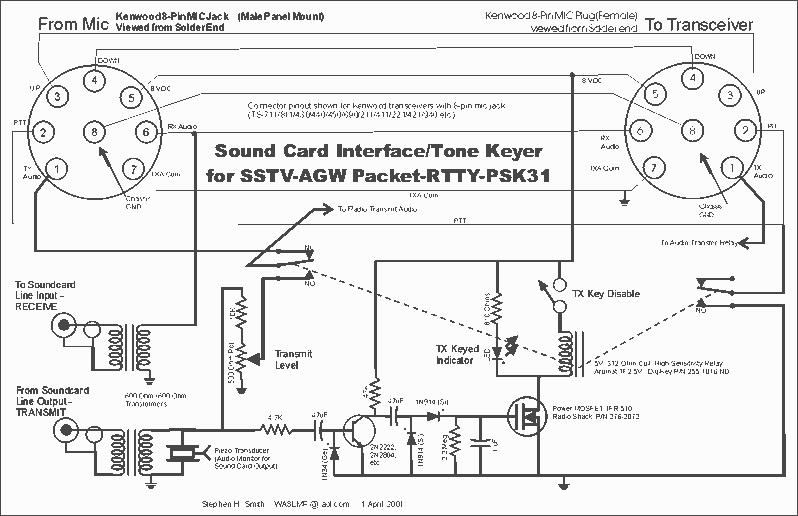
Cw Keyer
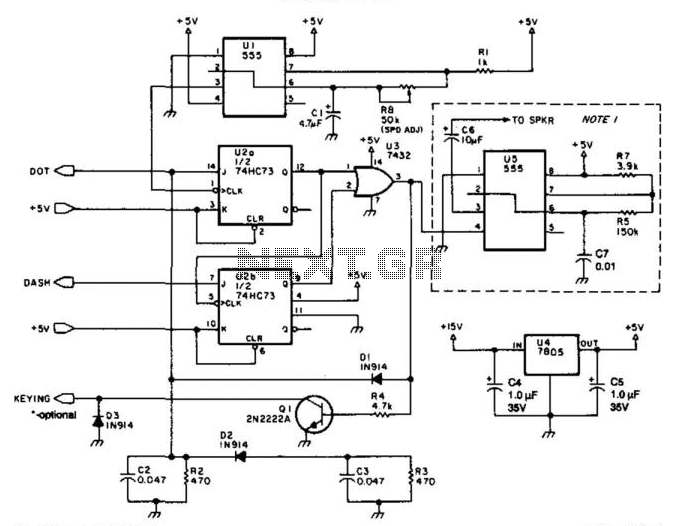
This electronic keyer utilizes four integrated circuits (ICs), or five if the optional sidetone oscillator is included, and operates from DC power sources ranging from 9 to 15 volts. A 2N2222 transistor is employed as the keying transistor. For applications requiring isolation or higher power handling capabilities, a 6-volt relay can be controlled by the 2N2222, allowing the relay to key the transmitter.
The electronic keyer circuit is designed to facilitate Morse code transmission, providing a reliable and efficient means of generating keying signals. The primary components include four ICs that serve various functions such as timing, control logic, and signal processing. The optional sidetone oscillator enhances the user experience by providing an audible tone that corresponds with the keying signal, allowing the operator to monitor the transmission in real-time.
The 2N2222 transistor acts as a switch, enabling or disabling the keying signal based on the operator's input. When the keyer is activated, the transistor conducts current, which can either directly key a low-power transmitter or drive a relay for higher power applications. The inclusion of a 6-volt relay provides additional flexibility, allowing the circuit to control larger transmitters or other devices that require higher voltages or currents.
The circuit's design should ensure proper biasing of the 2N2222 transistor to achieve optimal switching performance. Additionally, protective components such as diodes may be included to prevent back EMF from the relay from damaging the transistor. Capacitors and resistors will play crucial roles in filtering and stabilizing the power supply, as well as shaping the keying signal to meet the desired output characteristics.
Overall, this electronic keyer offers a versatile solution for Morse code enthusiasts, combining the functionality of modern ICs with the robustness of traditional relay-based keying methods. Proper implementation and component selection will result in a reliable and effective keying system suitable for a variety of amateur radio applications. This electronic keyer uses four ICs (five, if the optional sidetone oscillator is desired) and operates from dc sources of 9 to 15 V. A 2N2222 is used as a keying transistor. If isolators or more power handling ability is desired, a 6-V relay can be keyed with the 2N2222 and the relay in turn can be used to key the transmitter. 🔗 External reference
The electronic keyer circuit is designed to facilitate Morse code transmission, providing a reliable and efficient means of generating keying signals. The primary components include four ICs that serve various functions such as timing, control logic, and signal processing. The optional sidetone oscillator enhances the user experience by providing an audible tone that corresponds with the keying signal, allowing the operator to monitor the transmission in real-time.
The 2N2222 transistor acts as a switch, enabling or disabling the keying signal based on the operator's input. When the keyer is activated, the transistor conducts current, which can either directly key a low-power transmitter or drive a relay for higher power applications. The inclusion of a 6-volt relay provides additional flexibility, allowing the circuit to control larger transmitters or other devices that require higher voltages or currents.
The circuit's design should ensure proper biasing of the 2N2222 transistor to achieve optimal switching performance. Additionally, protective components such as diodes may be included to prevent back EMF from the relay from damaging the transistor. Capacitors and resistors will play crucial roles in filtering and stabilizing the power supply, as well as shaping the keying signal to meet the desired output characteristics.
Overall, this electronic keyer offers a versatile solution for Morse code enthusiasts, combining the functionality of modern ICs with the robustness of traditional relay-based keying methods. Proper implementation and component selection will result in a reliable and effective keying system suitable for a variety of amateur radio applications. This electronic keyer uses four ICs (five, if the optional sidetone oscillator is desired) and operates from dc sources of 9 to 15 V. A 2N2222 is used as a keying transistor. If isolators or more power handling ability is desired, a 6-V relay can be keyed with the 2N2222 and the relay in turn can be used to key the transmitter. 🔗 External reference
